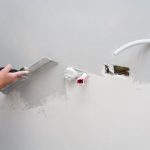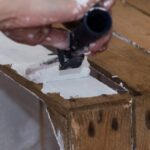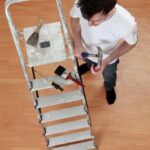Are you looking to enhance your basketball dribbling skills from the comfort of your own home? Mastering the art of dribbling is essential for any basketball player, and with the right techniques and practice, you can improve your skills significantly.
In this article, we will explore the importance of dribbling in basketball and provide you with valuable tips and exercises to help you elevate your game. Whether you’re a beginner looking to learn the basics or a seasoned player aiming to refine your technique, this guide will help you take your dribbling skills to the next level.
Dribbling is a fundamental skill in basketball that allows players to move with the ball while evading defenders and maintaining control. It’s not just about moving the ball up and down the court, but also about creating opportunities for scoring, making crucial plays, and keeping possession.
By mastering proper hand placement and body positioning, improving ball control, learning different dribbling moves, enhancing speed and agility, incorporating strength training, and developing mental focus and strategy, you can become a well-rounded player with excellent dribbling abilities.
In the following sections, we will delve into various aspects of improving basketball dribbling skills at home. From understanding the basics to utilizing home equipment for practice, we have compiled a comprehensive guide that caters to all levels of expertise. With dedication and consistent practice using our recommended drills and exercises, you can take significant strides in becoming a more proficient ball handler on the court. Let’s get started on your journey towards enhancing your basketball dribbling skills.
Understanding the Basics
When it comes to improving basketball dribbling skills, understanding the basics is essential. Proper hand placement and body positioning play a crucial role in mastering dribbling techniques. Whether you’re a beginner or looking to enhance your skills, focusing on the fundamentals will set a solid foundation for improvement.
Hand Placement
The way you position your hands on the ball can greatly impact your dribbling ability. Make sure to spread your fingers wide and keep the fingertips in contact with the ball for better control. Avoid cupping or palming the ball, as this can lead to turnovers and lack of control. Practice dribbling with both hands to develop equal strength and coordination.
Body Positioning
Maintaining an athletic stance is key to effective dribbling. Keep your knees bent, back straight, and head up to be ready to change directions quickly. Your non-dribbling hand should be used as a shield to protect the ball from defenders while maintaining a low center of gravity for balance and stability.
Practice Drills
To improve hand placement and body positioning, incorporate drills into your at-home practice routine. Set up cones or markers to simulate defensive pressure and work on dribbling while maintaining proper form. Additionally, use mirrors or video recordings to analyze your technique and make necessary adjustments.
By focusing on proper hand placement and body positioning, you can lay a strong groundwork for improving basketball dribbling skills at home. Understanding these basics will allow you to progress effectively through other aspects of dribbling improvement, such as ball control, speed, agility, strength training, mental focus, and strategy. Remember that consistent practice is key when striving for noticeable improvement in your dribbling abilities.
Improving Ball Control
When it comes to improving basketball dribbling skills at home, one of the most crucial aspects to focus on is ball control. Without precision handling, players can easily lose possession and miss out on scoring opportunities. Luckily, there are several drills and exercises that can be done at home to enhance ball control.
One effective drill for improving ball control is the stationary dribbling drill. This involves staying in one spot while focusing on quick, controlled dribbles with both hands. By practicing this drill consistently, players can develop a strong sense of touch and coordination with the basketball.
Another useful exercise for precise handling is the tennis ball dribbling drill. This involves dribbling a basketball while simultaneously bouncing a tennis ball with the other hand. This not only improves hand-eye coordination but also challenges players to maintain control over the basketball in dynamic situations.
Utilizing tools such as cones and resistance bands can also significantly improve ball control. Setting up a cone course and dribbling through it at varying speeds can help players navigate through tight spaces with ease. Additionally, using resistance bands while dribbling can simulate game-like scenarios where opponents apply pressure, ultimately enhancing a player’s ability to protect the ball.
Overall, these drills and exercises are essential for any player looking to improve their basketball dribbling skills at home.
| Drill/Exercise | Benefits |
|---|---|
| Stationary Dribbling Drill | Develops touch and coordination with the basketball |
| Tennis Ball Dribbling Drill | Improves hand-eye coordination and dynamic control of the basketball |
| Cone Course with Resistance Bands | Enhances ability to navigate through tight spaces and protect the ball under pressure |
Utilizing Dribbling Moves
Learning different dribbling moves such as crossovers, behind the back, and between the legs is essential for any basketball player looking to improve their dribbling skills at home. These moves not only add flair to your game but also enhance your ability to handle the ball with precision and control. Mastering these dribbling moves can give you the edge on the court, allowing you to maneuver around defenders and create scoring opportunities for yourself and your teammates.
One of the best ways to improve these dribbling moves at home is through regular practice and repetition. Set aside dedicated time each day to work on these skills, focusing on executing each move with proper technique and speed. Start by practicing each move individually before combining them into fluid sequences. This will help you develop muscle memory and enhance your overall ball-handling abilities.
In addition to honing your dribbling moves, it’s important to practice these skills in various situations and under different conditions. Set up cones or use markers to simulate defenders or obstacles, forcing yourself to navigate around them while performing crossovers, behind the back, and between the legs dribbles.
This type of simulation can help improve your ability to execute these moves under pressure during actual gameplay. By consistently challenging yourself in this way, you can build confidence in your dribbling abilities and become a more effective ball handler overall.
Enhancing Speed and Agility
Speed Drills
To improve your speed, incorporate sprinting drills into your practice sessions. Use markers or cones to set up a course that requires quick changes in direction, simulating the movements required during a basketball game. Practice accelerating quickly from a stationary position and decelerating just as rapidly to change direction. These drills will help you become faster and more agile on the court.
Agility Exercises
Agility is just as important as pure speed when it comes to dribbling in basketball. Incorporate ladder drills, cone drills, and shuttle runs into your training regimen to improve your agility and ability to change directions swiftly. Focus on maintaining proper body positioning while moving through these exercises, keeping a low center of gravity and staying light on your feet.
Reaction Time Training
Improving your reaction time is vital for successfully navigating through defenders while dribbling. Utilize reaction ball drills or have a training partner call out different commands for you to react to while dribbling the ball. These exercises will help you sharpen your reflexes and make split-second decisions with the ball in hand.
By incorporating these speed and agility workouts into your training routine, you can significantly enhance your overall basketball dribbling skills at home, making you a more effective player on the court. Remember to practice consistently and with determination in order to see noticeable improvements over time.
Incorporating Strength Training
To improve basketball dribbling skills at home, it is essential to work on building upper body and core strength. This will not only enhance overall performance but also contribute to power dribbling, which is crucial in driving through defenders and maintaining control of the ball. Here are some effective strength training exercises that you can incorporate into your at-home basketball practice routine:
1. Push-ups: Push-ups are an excellent way to build upper body strength, particularly in the arms, shoulders, and chest. By increasing your push-up reps over time, you can improve your ability to withstand physical pressure while dribbling the ball.
2. Planks: Planks are a simple yet effective exercise for strengthening the core muscles, including the abs and lower back. A strong core is essential for maintaining balance and stability while executing dribbling moves on the court.
3. Medicine ball twists: Using a medicine ball, perform twisting exercises to target the obliques and rotational muscles. This will help improve your ability to change directions quickly while dribbling, giving you an edge over defenders.
In addition to these exercises, incorporating resistance band drills into your strength training regimen can further enhance your power dribbling capabilities. By consistently focusing on building upper body and core strength, you can take your basketball dribbling skills to the next level from the comfort of your own home.
Mental Focus and Strategy
Developing mental focus and strategy is a crucial aspect of improving basketball dribbling skills. While physical prowess is important, the ability to make split-second decisions and read the court can elevate a player’s dribbling game to the next level. Here are some tips on how to develop court awareness and decision-making skills in basketball:
- Stay focused on the game: It’s essential to keep your eyes up and be aware of your surroundings while dribbling. Practice scanning the court for open teammates, defenders, and potential passing lanes.
- Improve decision-making: Work on making quick decisions while dribbling, such as whether to drive to the basket, pass to a teammate, or pull up for a shot. Incorporate decision-making drills into your practice routine.
- Play simulated games: Set up scenarios during your at-home practice sessions that mimic real game situations. This can help you develop the ability to read defensive schemes and make effective offensive moves.
Additionally, developing mental toughness is important for maintaining composure under pressure during games. This involves staying confident in your abilities, being resilient in the face of challenges, and remaining focused throughout the course of a game.
Overall, improving mental focus and strategy will complement your technical dribbling skills and contribute to becoming a more well-rounded and effective basketball player.
Utilizing Home Equipment
When it comes to improving basketball dribbling skills at home, utilizing the right equipment can make all the difference. Cones, resistance bands, and other tools can provide valuable assistance in honing your dribbling technique and enhancing overall performance on the court.
One of the most effective ways to use home equipment for dribbling practice is by incorporating cones into your drills. Set up a series of cones in a straight line or in a zigzag pattern, then practice dribbling around them while maintaining control of the ball. This will not only help improve your ball handling skills but also enhance your ability to maneuver around defenders during a game.
Another essential piece of home equipment for improving dribbling skills is resistance bands. These bands can be used to add an extra challenge to your dribbling exercises by creating tension between your legs as you move with the ball. This added resistance helps strengthen the muscles used for dribbling and enhances overall control and coordination.
In addition to cones and resistance bands, other tools such as agility ladders and reaction balls can also be beneficial for improving basketball dribbling skills at home. Agility ladders can help enhance footwork and speed, while reaction balls are great for developing hand-eye coordination and reaction time. By incorporating these tools into your home training regimen, you can take your dribbling skills to the next level and see significant improvement in your performance on the basketball court.
| Equipment | Benefits |
|---|---|
| Cones | Enhances ball handling skills and maneuverability |
| Resistance Bands | Strengthens dribbling muscles and improves control |
| Agility Ladders & Reaction Balls | Enhances footwork, speed, hand-eye coordination, and reaction time |
Conclusion
In conclusion, improving basketball dribbling skills at home is not only achievable but also essential for any aspiring basketball player. By understanding the basics of proper hand placement and body positioning, players can lay a solid foundation for their dribbling technique. This should be followed by regular drills and exercises to enhance ball control and precision handling, as well as practicing advanced moves such as crossovers, behind the back, and between the legs dribbles.
Furthermore, incorporating strength training and workouts to increase speed and agility will significantly improve a player’s overall dribbling ability. By focusing on building upper body and core strength, athletes can exhibit more powerful dribbles with greater efficiency. Mental focus and strategy are equally important in developing court awareness and decision-making skills while dribbling under pressure.
Lastly, utilizing home equipment such as cones, resistance bands, and other tools for dribbling practice can provide a structured approach to improvement. By consistently implementing these tips for ongoing practice at home, players can see significant advancements in their basketball dribbling skills over time. With dedication, hard work, and the right guidance, anyone can become a proficient ball handler both on the court and at home.
Frequently Asked Questions
How Can I Practice Ball Handling by Myself?
Practicing ball handling by yourself can be done in several ways. One way is to use tennis balls to improve your hand-eye coordination. You can also work on your dribbling skills by doing stationary drills and practicing different dribbling moves.
How Can I Improve My Dribbling Skills?
Improving dribbling skills requires dedication and consistent practice. A great way to improve is by doing cone drills, where you set up a series of cones and practice dribbling around them with speed and control. Another method is to use your non-dominant hand more often to build dexterity.
How Can I Improve My Dribbling at Home in Basketball?
You can improve your dribbling at home in basketball by creating a designated space for practicing dribbling drills. Utilize the time at home to work on both hands’ dribbling techniques, incorporating crossover and behind-the-back moves into your routine. Additionally, watching online tutorials can provide valuable tips for improvement.

I’m thrilled to have you here as a part of the Remodeling Top community. This is where my journey as an architect and remodeling enthusiast intersects with your passion for transforming houses into dream homes.





